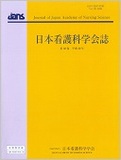Japanese
English
- 販売していません
- Abstract 文献概要
- 参考文献 Reference
- サイト内被引用 Cited by
要旨
目的:II期以降の続発性リンパ浮腫患者が,複合的治療(以下CDT)を行う際のアドヒアランスを獲得していくプロセスを明らかにする.
方法:CDTのアドヒアランスが獲得されている10名の女性リンパ浮腫患者に対して半構造化面接法による質的帰納的研究を行った.
結果:患者がCDTのアドヒアランスを獲得するプロセスには,【知覚】【動機づけ】【実践】【医療者の存在】【障壁】の5つで構成されていた.それらは時間軸で4つの様相に分類されリンパ浮腫の増悪を知覚しCDTに取り掛かり始める様相から,リンパ浮腫を受け入れながらCDTの主体性ある取り組みが定着する様相へと変化していた.
結論:患者が,CDTを行う際のアドヒアランスの獲得には,楽であるという【知覚】が,やろうという【動機づけ】と連動して,【実践】を引き起こす正の循環が,リンパ浮腫患者のCDTのアドヒアランスの獲得をもたらす可能性が示唆された.
Objective: The purpose of this study was to clarify the process of adherence to complex decongestive therapy (CDT) acquired by the patients with secondary lymphedema.
Method: Semi-structured interview was conducted with 10 female lymphedema patients who had well-established adherence to CDT. Interview transcripts were qualitatively analyzed.
Result: Five categories including “perception of lymphedema,” “motivation,” “practice,” “medical profession,” “barrier” were associated with the process of adherence to CDT acquired by the patients. These were divided into 4 aspects based on time distribution. Aspects were changed from the first aspects of getting on the CDT caused by worsening of lymphedema to final aspects of becoming a habit to CDT spontaneously.
Conclusion: In order to acquire adherence to CDT, it is important for the patients who suffer from secondary lymphedema to recognize the lightness in their arms or legs with lymphedema and additionally to motive them with customized CDT.
Copyright © 2018, Japan Academy of Nursing Science. All rights reserved.


